Last-Minute NYC Holiday Gift Guide 🎁
We’ve created a holiday gift guide with presents for the intrepid New Yorker that should arrive just in time—


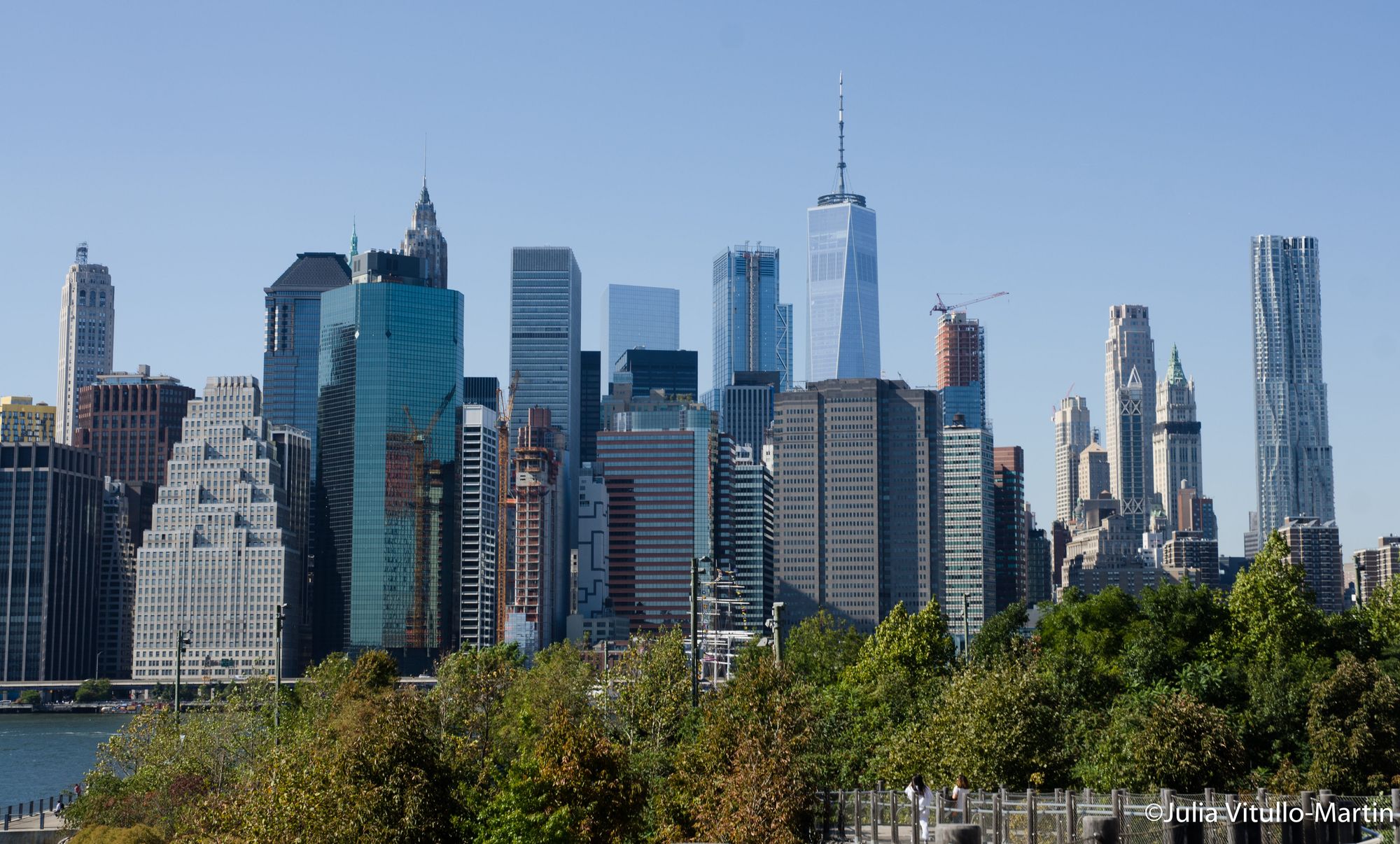 Post-Bloomberg NYC: Lower Manhattan as Seen from Brooklyn Bridge Park
Post-Bloomberg NYC: Lower Manhattan as Seen from Brooklyn Bridge Park
The Bloomberg administration will almost surely go down in history as New York’s most economically successful mayoralty ever—an achievement that was far from inevitable. Elected as a virtual political unknown just weeks after the 9/11 attacks on the World Trade Center, Michael Bloomberg became the 108th mayor of a city experiencing an uncharacteristic sense of vulnerability. Its downtown had become a “graveyard for nearly 3,000 souls,” wrote Columbia University Professor Lynne Sagalyn, while its economy endured some $40 billion in economic losses, said the Federal Reserve.
But Bloomberg understood capitalism and he hired as his Deputy Mayor for Economic Development and Rebuilding a man who also understood capitalism, Daniel L. Doctoroff, author of the new memoir-manifesto, Greater than Ever, New York’s Big Comeback (PublicAffairs).
Together, they looked unemotionally at New York’s traditional boom-and-bust economy, and determined an agenda of rebuilding and investment that radically transformed the city. “We will rebuild, renew, and remain the capital of the free world,” said Bloomberg in his first inaugural speech in 2002. And indeed they did. Here are some of the ideas that reshaped New York.
The Bloomberg administration concluded they had to halt New York’s traditional boom-and-bust cycle or “condemn the city to an endless circle of soaring and collapsing,” recalls Doctoroff. Fundamental to this view was the recognition that the city’s decline from having over a million manufacturing jobs in 1947 to about 172,000 in 2000 had resulted in thousands of acres of underused and vacant land zoned for industrial or manufacturing uses for which New York could no longer compete. And despite its occasional derelict appearance, much of the unproductive property along New York’s 578-mile coastline, on the West Side of Manhattan, and in Downtown Brooklyn was potentially prime. Because relatively few people lived in these former industrial areas, Doctoroff’s staff calculated that if all of the big plans on the table were carried out, they would create some 120 million square feet of buildable residential and commercial space, while only dislocating about 400 people (a contentious number).
It was a sound strategy. But for most New Yorkers in those early dark days after 9/11 vacant land meant the immense chasm smoldering in downtown New York from the destruction of the World Trade Center. “Just blocks from my new office,” Doctoroff writes, “the collapse of the Twin Towers had not only blown a hole in the city’s heart but also shredded the district that had been New York’s historic birthplace and created a fiscal nightmare.”
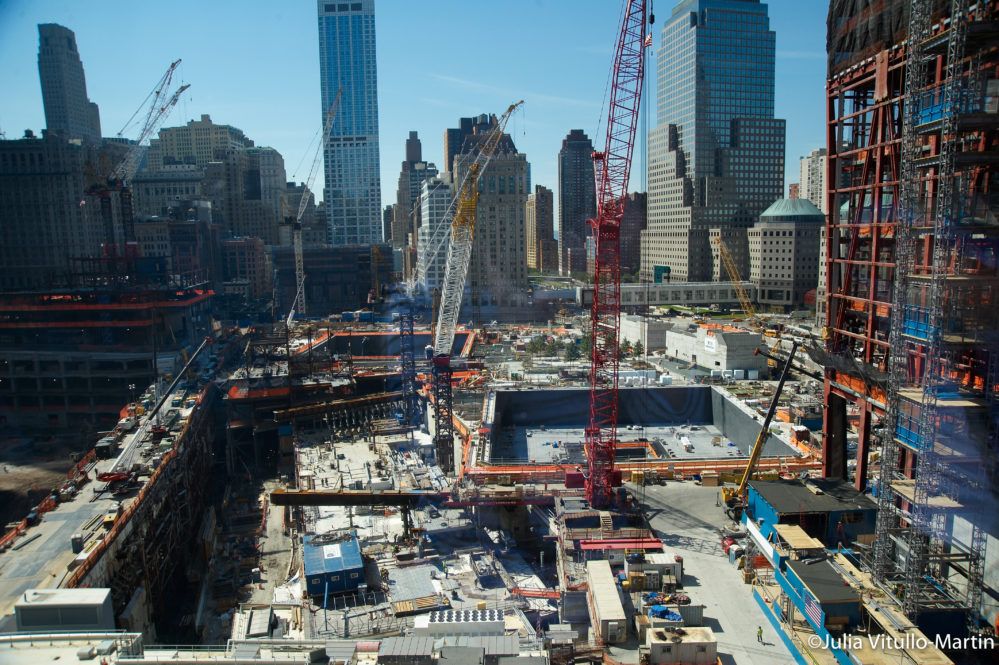 Ground Zero construction site, as seen from 7 WTC, 2010
Ground Zero construction site, as seen from 7 WTC, 2010
Ground Zero had to be rebuilt as quickly and efficiently as possible, but a pre-Bloomberg administration agreement between Mayor Rudy Giuliani and Governor George Pataki had vested authority for distributing the $20 billion in federal aid in a new corporation, the Lower Manhattan Development Corporation, controlled by the governor, who solely appointed the executive director. The Bloomberg administration was effectively shut out.
Everything to do with Ground Zero was convoluted beyond normal, starting with property ownership. The World Trade Center belonged not to the city of New York but to the Port Authority of New York and New Jersey, the bi-state agency created in the 1920s to promote public transportation and infrastructure. In a July 2001 privatization scheme, the Port had conveyed a 99-year lease to private developer Larry Silverstein, who intended to enforce his rights despite tremendous opposition from the Port Authority, elected officials, and influential media.
Bloomberg and Doctoroff were at odds not only with the Port Authority, whose bond covenants stipulated commercial development, but with Silverstein, for whom Doctoroff has few kind words. It had to be frustrating since the administration had no formal power to decide any of the big questions. Who would rebuild Ground Zero, and what was to be built? The full 10 million square feet of commercial space that had been destroyed? or the combination of commercial, residential, retail, memorial, and open space the Bloomberg administration championed?
A proposal for five immense revenue-producing office towers on the site was opposed by nearly everyone. Doctoroff’s discussion of the ugly wrangling over what New Yorkers had come to regard as sacred space equivalent to Gettysburg is sobering. New York was in serious trouble. “After the terrorist attacks,” writes Doctoroff, “New York became known as a devastated city. Every aftershock was reported widely around the world. Tourism plunged after 9/11. Surveys done of people around the country and around the world indicated that they thought the physical damage to the city was far more widespread than the terrible, but very localized, reality.”
Yet despite the bickering Larry Silverstein, in an impressive display of drive and professional competence, rebuilt 7 WTC (not one of the Twin Towers), opening it in May 2006, far in advance of any other construction, as seen in the photo above of the cleared site, shot from an upper floor of 7 WTC, which was occupied and operational—and standing alone.
Eventually, after multiple rounds of negotiation, Silverstein turned over control of 1 WTC to the Port Authority in exchange for the right to develop three other towers. The Port Authority brought in the Durst organization to build 1 WTC, briefly called the “Freedom Tower” by Pataki. With its spire, it is 1,776 feet tall, making it the largest building not only in New York but in the entire Western Hemisphere. Silverstein built the other three towers.
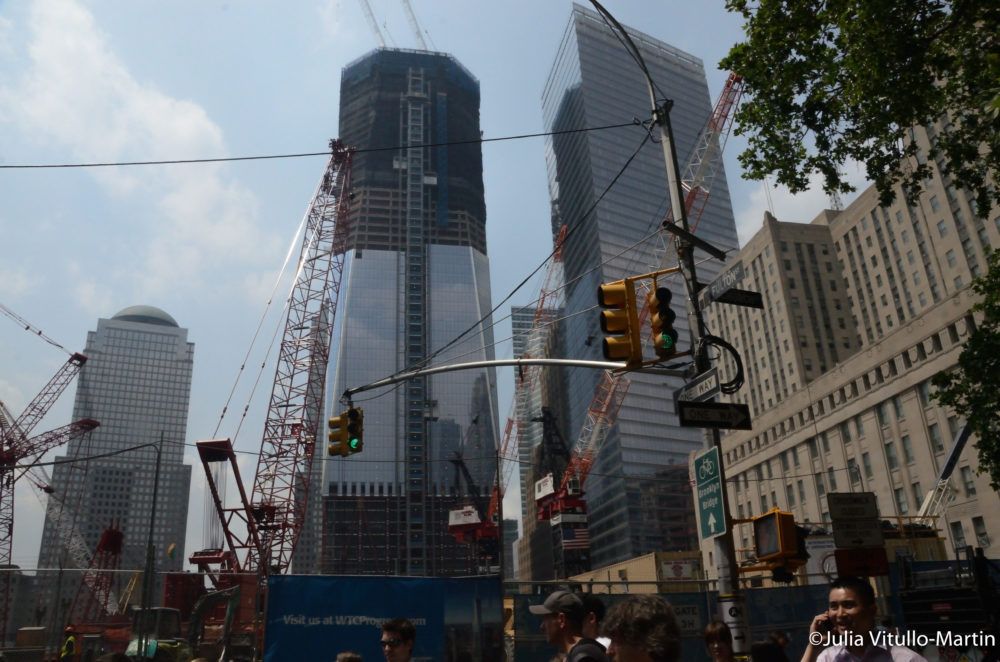 Ground Zero construction site, 1 WTC in foreground, 2010
Ground Zero construction site, 1 WTC in foreground, 2010
Also caught in the morass of Ground Zero was the 9/11 Memorial. Its elegant twin pools, designed by Michael Arad to be set within the footprints of the original twin towers, proved to be immensely expensive to build. Worse, the Memorial quickly became embroiled in an angry argument about arranging the names of the dead. Arad’s proposal, writes Doctoroff, “was to do it randomly, symbolic of the ‘haphazard brutality of death.’ The families of the victims hated it. They wanted to be able to find their loved ones’ names.”
Over time a system of “meaningful adjacencies” was developed to reflect where victims were during the attacks, their affiliations, and their personal stories. But costs had ballooned to $540 million (which would ultimately rise to over $700 million), and the memorial foundation was short hundreds of millions of dollars. Bloomberg offered to chair the memorial foundation, quickly raising $350 million from private sources in addition to the $420 million from the public sector. He succeeded in having the memorial open on the 10th anniversary of the attacks.
By 2016, says Doctoroff, the memorial museum drew 3.2 million people, and 6.25 million visited the memorial plaza. Despite the horror at its core, Lower Manhattan began reweaving its urban fabric, re-establishing its street grid, and welcoming new residents, which had since 2001 tripled to 61,000 in the one-square-mile-area south of Chambers Street. Hundreds of new storefronts, restaurants, and bars opened. The area gained some 40,000 jobs, the greatest employment surge in 30 years. The site had become, concludes Doctoroff, the “focus for a reinvention of all of Lower Manhattan that exceeded even our high expectations.”
Citizens Housing & Planning Council executive director Jerilyn Perine, who served as housing commissioner during both the Giuliani and the Bloomberg administrations, recalls, “New York didn’t have underlying problems. Before 9/11 it was the only older, post-industrial city with a growing population. It was a super exciting place, with prosperous immigrant communities, tourism as an economic engine, and consistently declining crime. There was no question but that we would recuperate. Having the right mayor in Bloomberg meant we recuperated a little faster.” Hard to know what would have happened with a different mayor, or a different strategy, but given New York’s temperament it’s safe to say that the fast recuperation was vital.
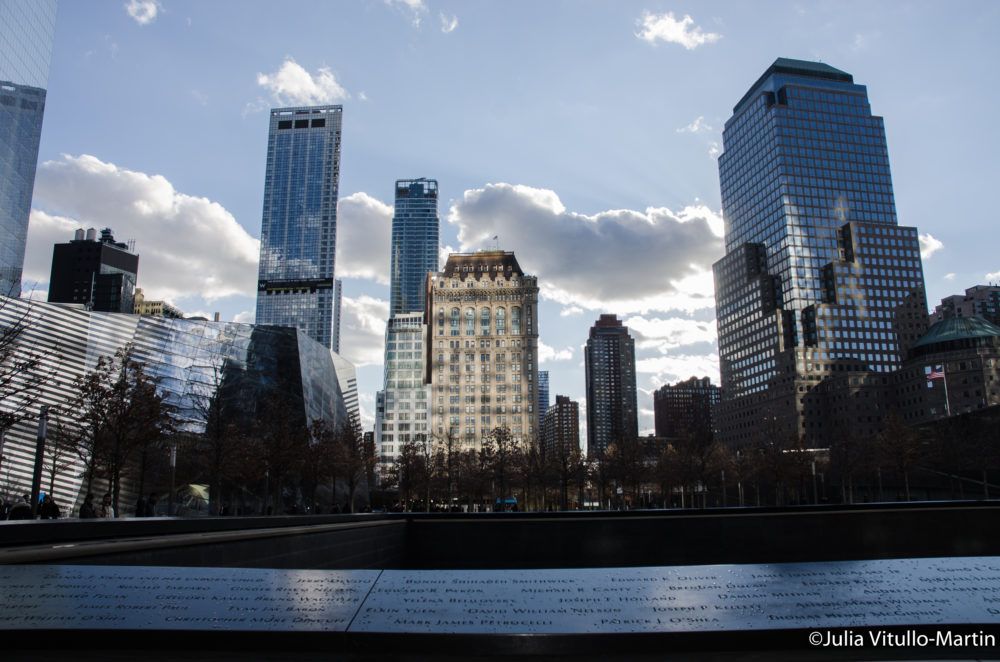 Post Bloomberg: Rebuilt Ground Zero at Dusk, 9/11 Memorial in Foreground, Oculus on Left
Post Bloomberg: Rebuilt Ground Zero at Dusk, 9/11 Memorial in Foreground, Oculus on Left
Meanwhile, Bloomberg, whom Doctoroff calls “the ultimate counterintuitive thinker and doer,” believed the answer to the city’s overall economic health was to invest in New York when others were pulling out after the attacks, and to direct attention to underused areas. And even though New York has long been the country’s densest city and is regarded by many outsiders as overbuilt, huge sections are derelict, including parts within view of the country’s most valuable real estate.
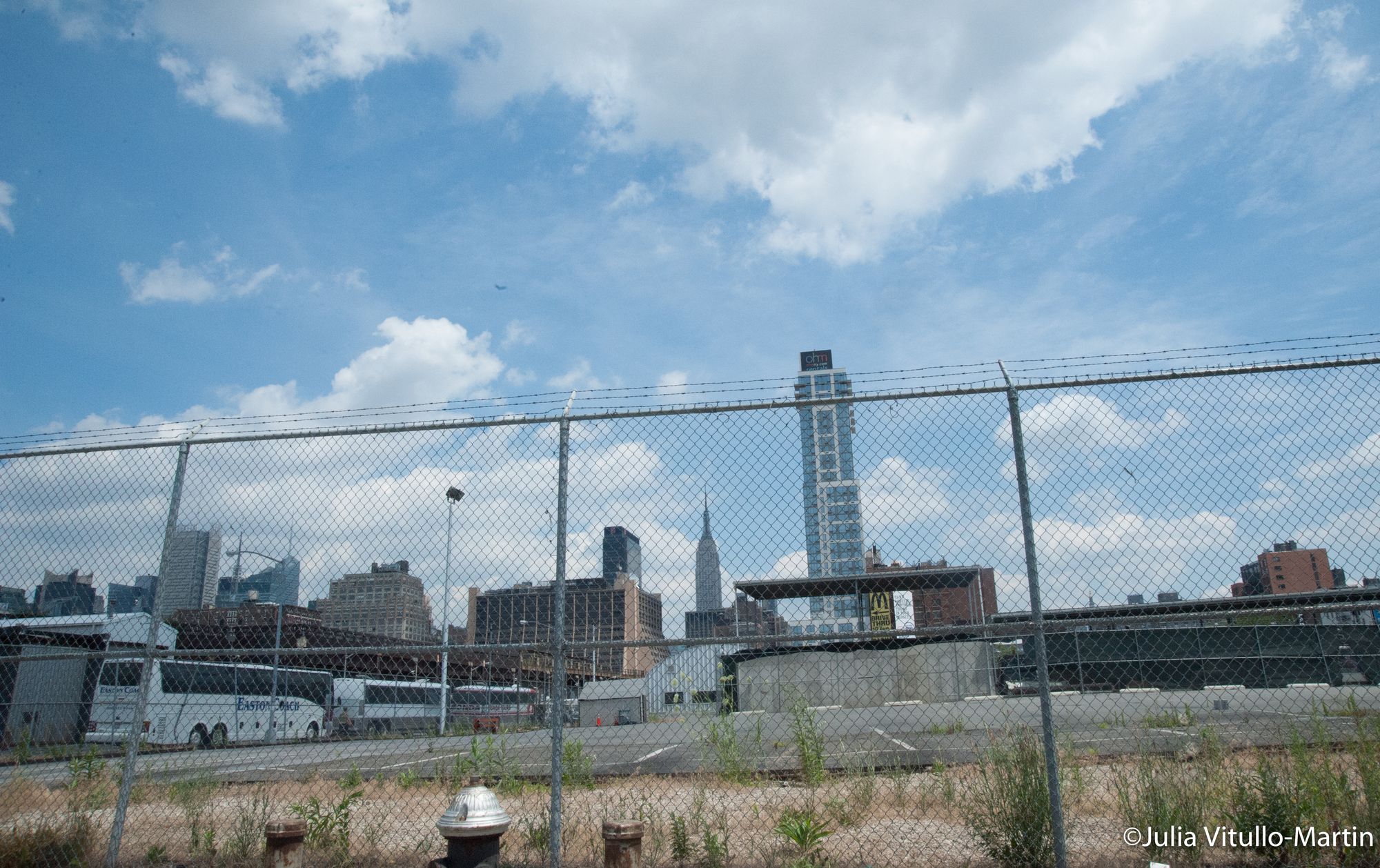 The West Side of Manhattan, Empire State Building in distance
The West Side of Manhattan, Empire State Building in distance
In February 2002, a month after taking office, Bloomberg proposed a five-borough economic development strategy, creating new opportunities all over the city for companies looking for lower-priced space—Downtown Brooklyn, Long Island City, Flushing and Jamaica in Queens, the Hub in the Bronx, St. George in Staten Island, but especially Hudson Yards on the West Side of Manhattan, “the biggest long-term opportunity to expand our economic base.”At a breakfast hosted by the city’s premier business group, the Association for a Better New York, Bloomberg laid out his vision clearly, We need to bring mass transit to the area, including the No. 7 line, the Long Island Railroad, Metro North service on Amtrak’s old Empire Line, and enhanced ferry service. We need parkland and better access to the Hudson River Park. And we need to rezone the area to accommodate commercial and residential growth. By doing these things, we will unlock the potential of the surrounding area, turning Manhattan’s last frontier into one of the world’s great spaces.”
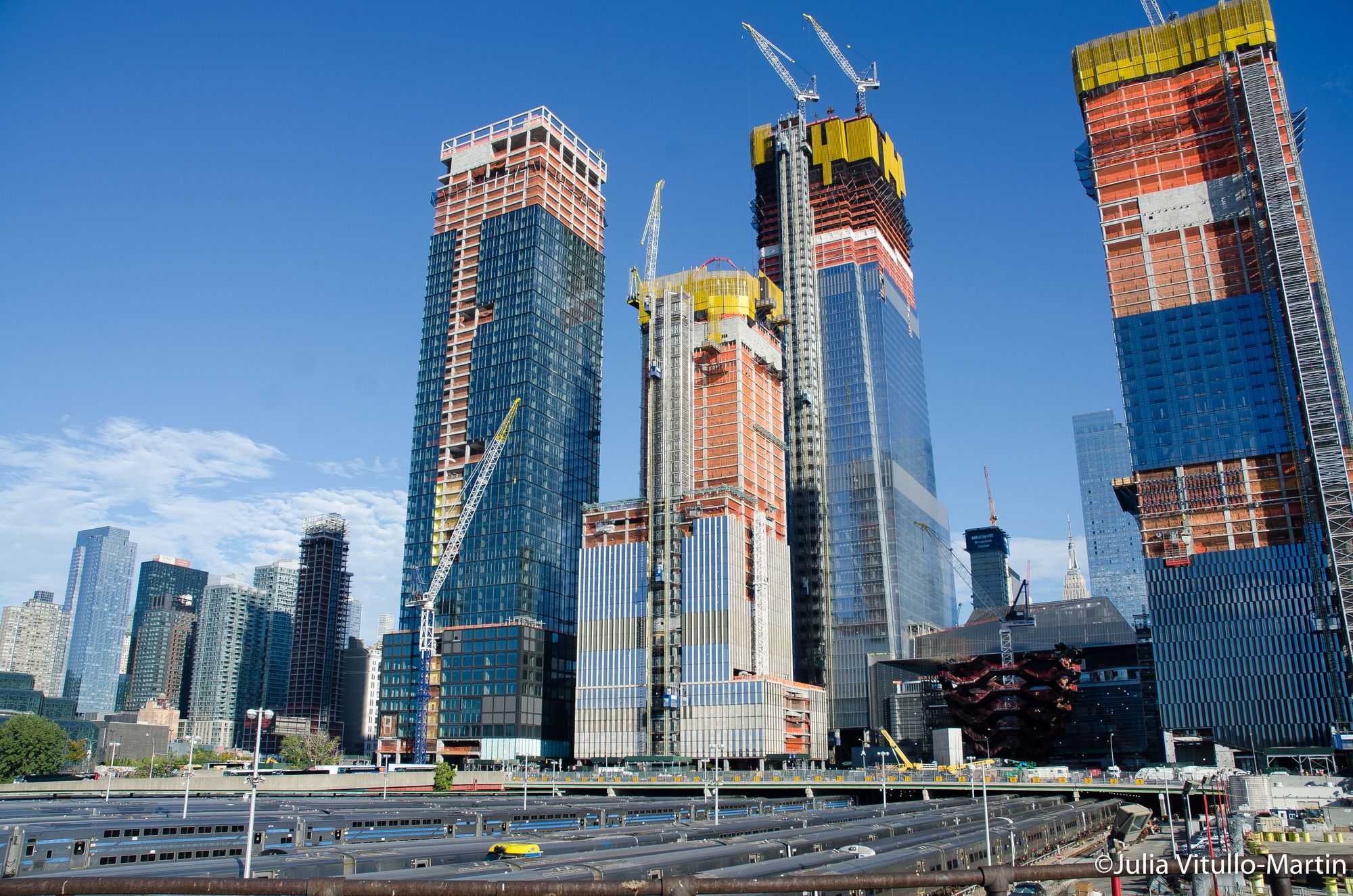 Hudson Yards construction, Long Island Railroad tracks
Hudson Yards construction, Long Island Railroad tracks
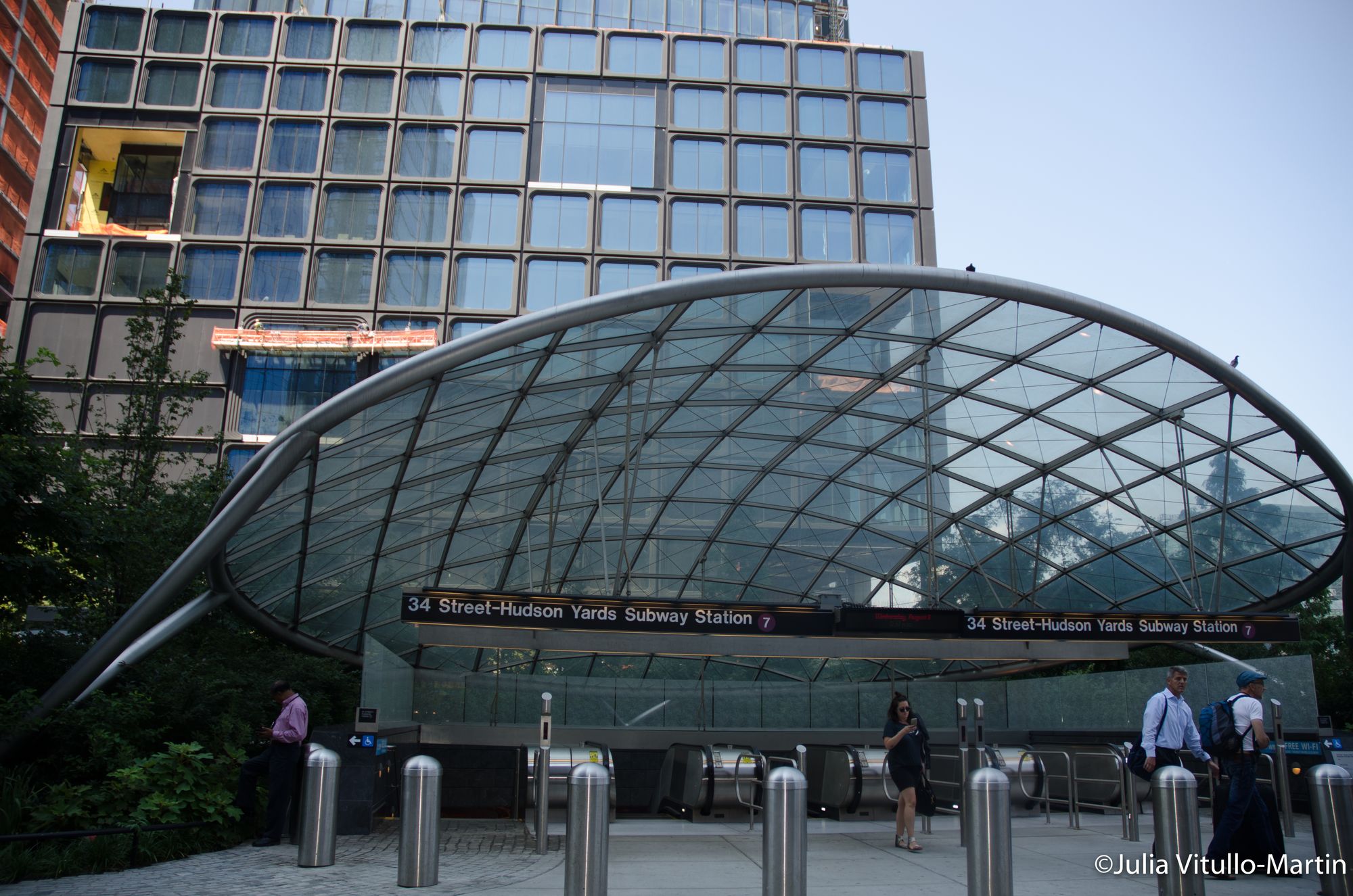 Hudson Yards subway station, MTA No. 7 line, 34th Street
Hudson Yards subway station, MTA No. 7 line, 34th Street
It was really classic urban planning, implementing a major rezoning to allow mixed-used development aiming for 28 million square feet of office space, 12.6 million square feet (12,600 units) of residential, 1.5 million square feet of hotels, and 700,000 square feet retail. “We were asking,” writes Doctoroff, “to build the equivalent of Downtown Seattle or Downtown Minneapolis on a small, square patch of Manhattan, a city within a city.” Despite their innovative financing strategy, the administration had to cut some crucial items as the total price tag began to reach $3 billion. The most damaging cut was the elimination of the No. 7’s station at 41st Street and 10th Avenue, which produced a “screaming” phone call from Senator Charles Schumer whose Group of 35 effort had given Hudson Yards some of its planning legitimacy. And while Schumer and Doctoroff eventually made up, many public transportation advocates (including me) have remained disgruntled over the loss of the station.
 Hudson Yards construction, 2017
Hudson Yards construction, 2017
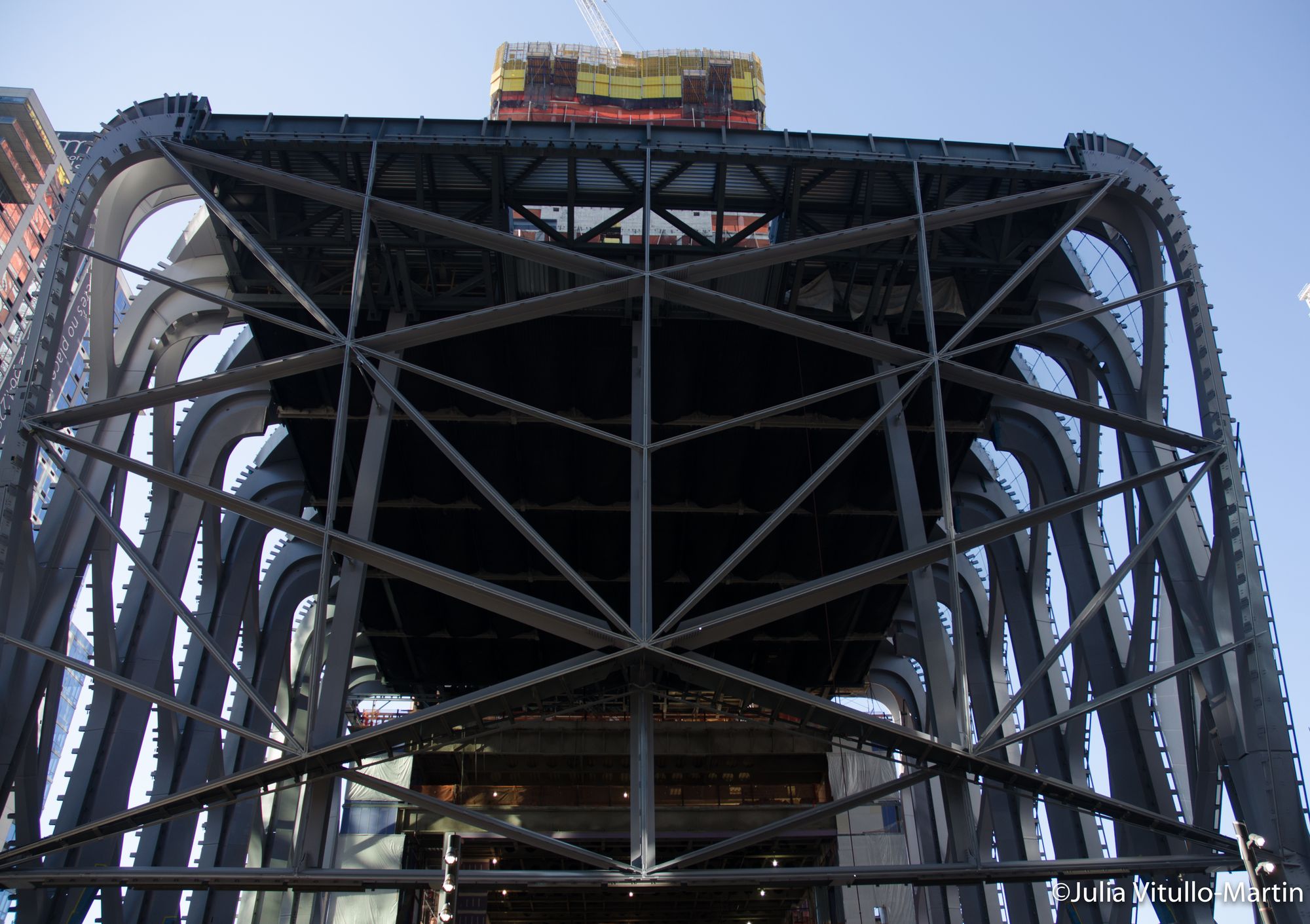 The Shed, a New Center for the Arts at Hudson Yards
The Shed, a New Center for the Arts at Hudson Yards
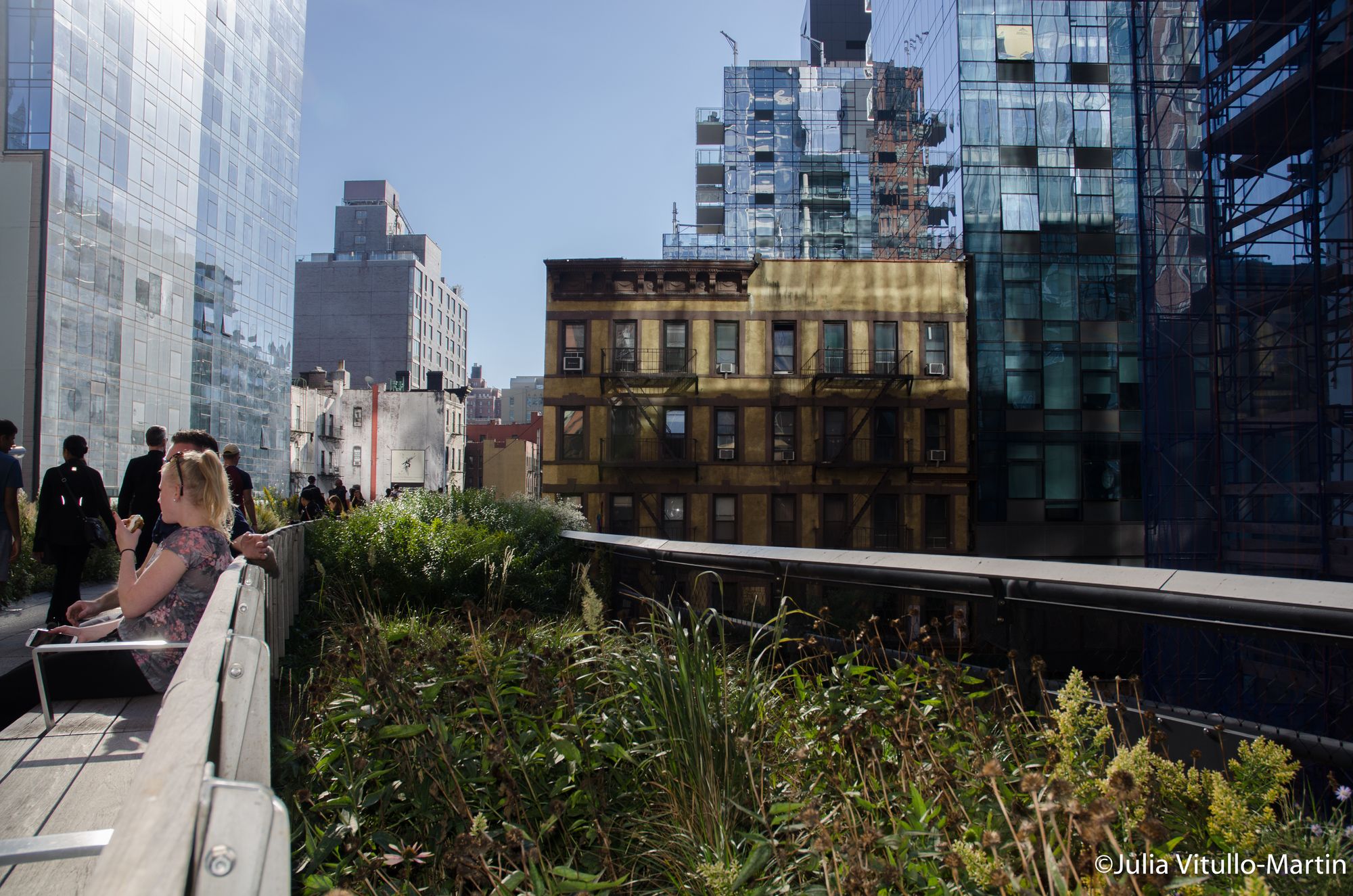 The High Line, a wildly popular 1.45 mile-long elevated freight rail line in Chelsea, just below Hudson Yards
The High Line, a wildly popular 1.45 mile-long elevated freight rail line in Chelsea, just below Hudson Yards
Dan Doctoroff may well have been the first deputy mayor in city history to regularly bike to work, riding to City Hall at dawn from his Upper West Side brownstone, using the Hudson River Park bike path that was most recently in the news for the terror attack that killed 8 people and injured over a dozen.
His commute was, he writes, “shadowed by a truth about the regional economy that I had only sensed earlier: New York City was getting its lunch eaten by its neighbor to the west.” New Jersey’s cities, especially Hoboken and Jersey City, were attracting young households by offering new three-room condos with spectacular views of Downtown New York. His solution: Brooklyn!
Like New Jersey, Brooklyn had miles of underused waterfront. But better than New Jersey, Brooklyn was tightly linked to Midtown and Lower Manhattan by a developed subway system and three road bridges. It had excellent housing stock, world-famous cultural institutions, and a dozen local colleges. Doctoroff gives credit to Mayor Giuliani here: “Giuliani’s intense focus on reducing crime throughout the city was the foundation that made all else possible.”
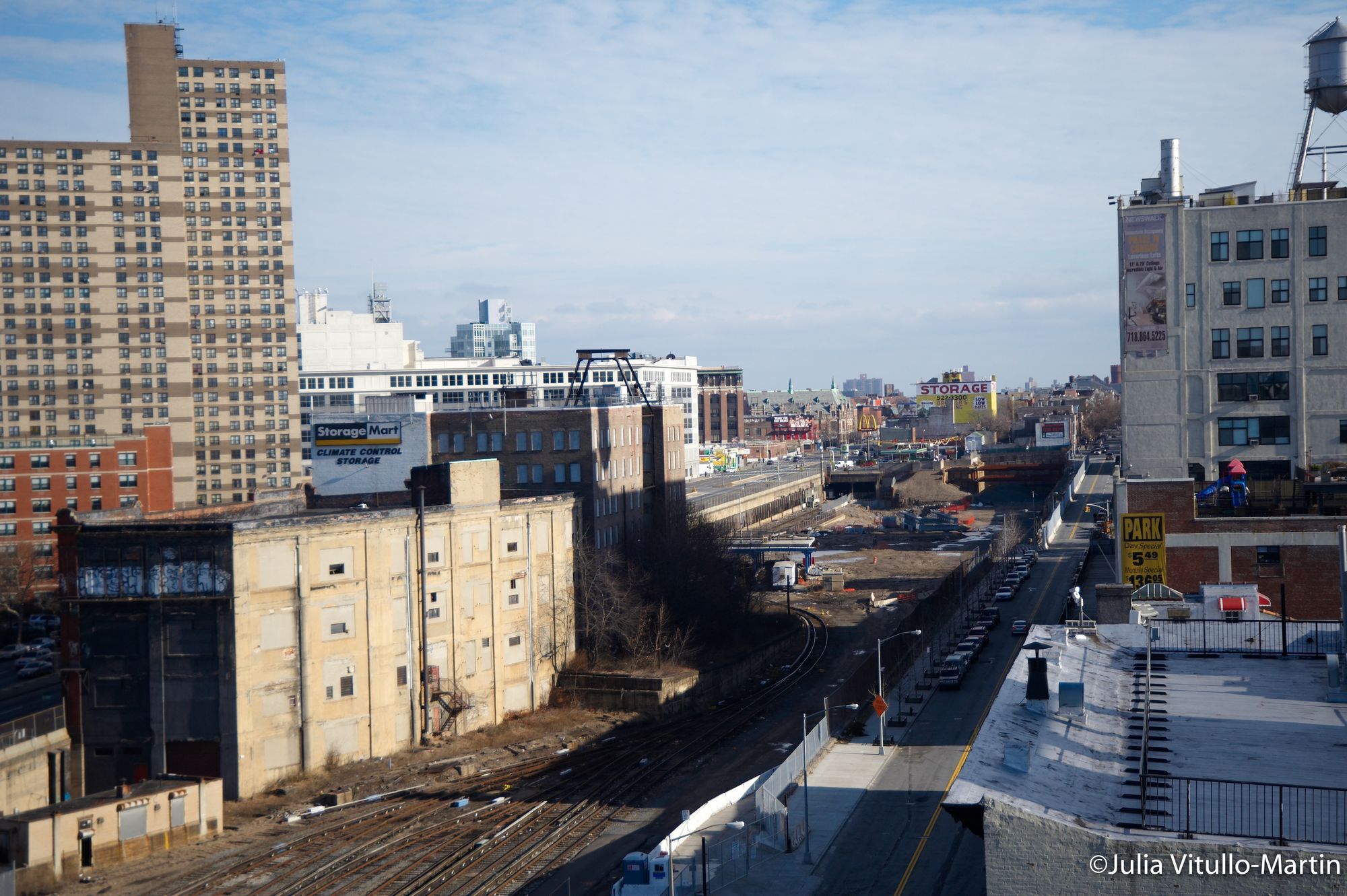 Pre-Bloomberg development: Brooklyn Atlantic Yards, rail tracks on Pacific Street, 2008
Pre-Bloomberg development: Brooklyn Atlantic Yards, rail tracks on Pacific Street, 2008
“We should start to think of Brooklyn as a separate city,” writes Doctoroff, “with a mixed-use downtown filled with arts, recreation, and parks at or near the core, surrounded by incomparable housing and other amenities radiating into the already strong neighborhoods surrounding Downtown Brooklyn and new ones along the nearby waterfront.” But in some ways Brooklyn was a separate city politically, its own proud borough that has never quite forgotten the consolidation of 1898 that has linked it perpetually to the stronger, more dominant borough across the river.
Doctoroff rightly saw the underused Atlantic Yards, with its superb transportation and central location, as a potential development site. And he understood that he needed an experienced, relentless developer to devise and manage a project large enough to justify what would be the immense development costs of building around and over the rail yards. The chosen developer, especially revered by then-Brooklyn Borough President Marty Markowitz, was Forest City Ratner, headed by Bruce C. Ratner, a well-connected, former city official.
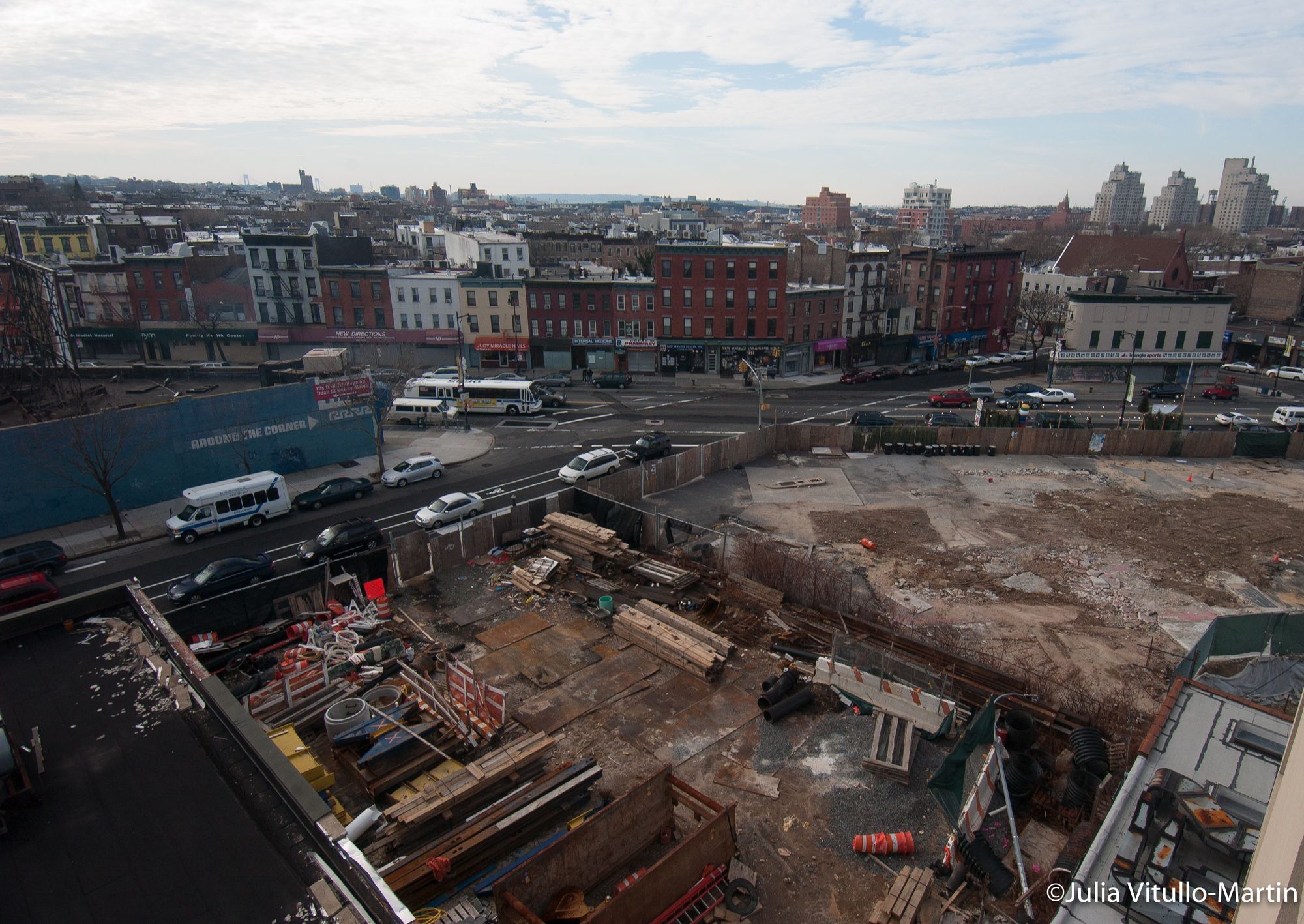
Atlantic Yards construction, traditional Brooklyn development in distance, 2008
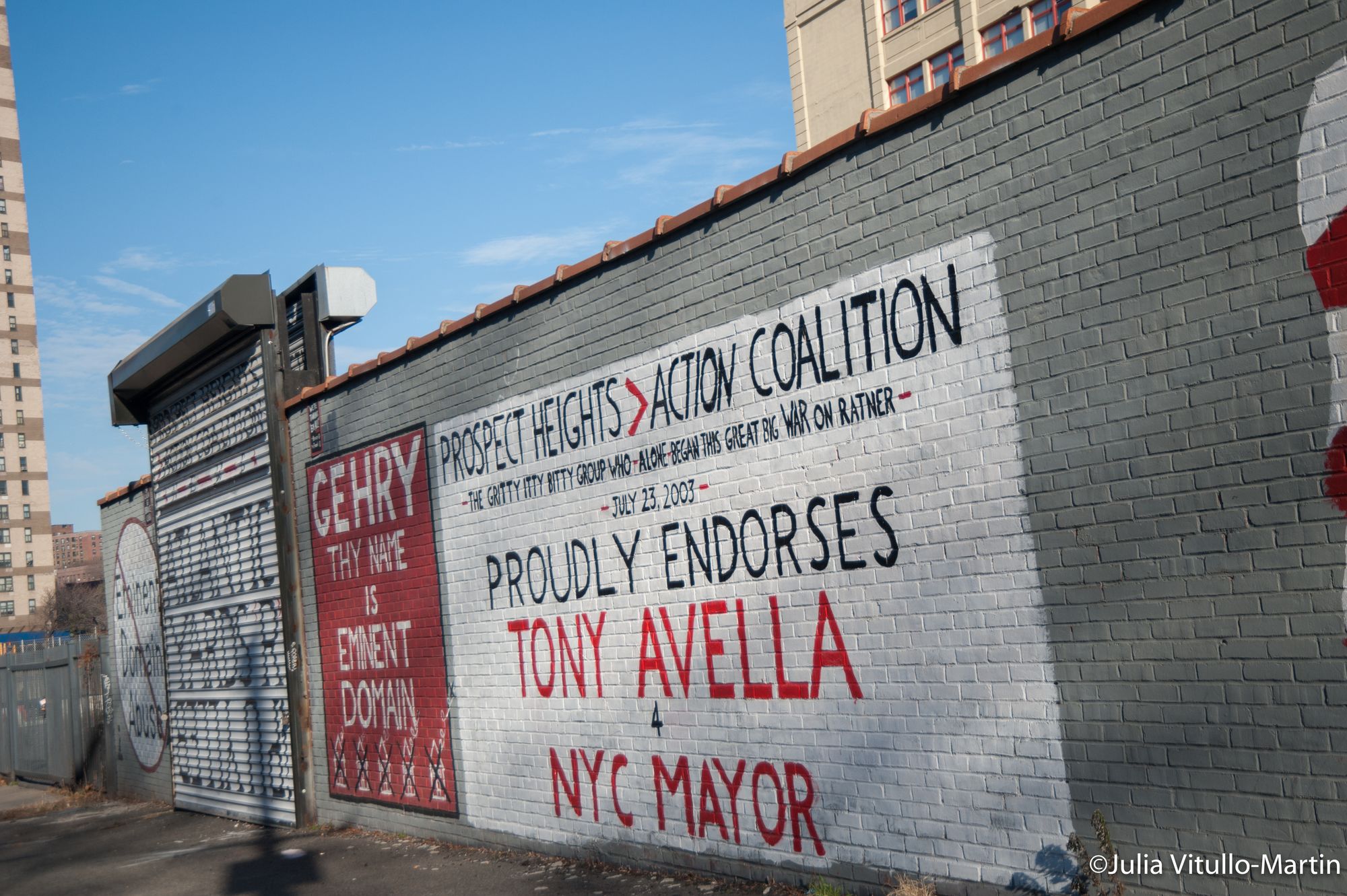
Atlantic Yards opposition, 2008
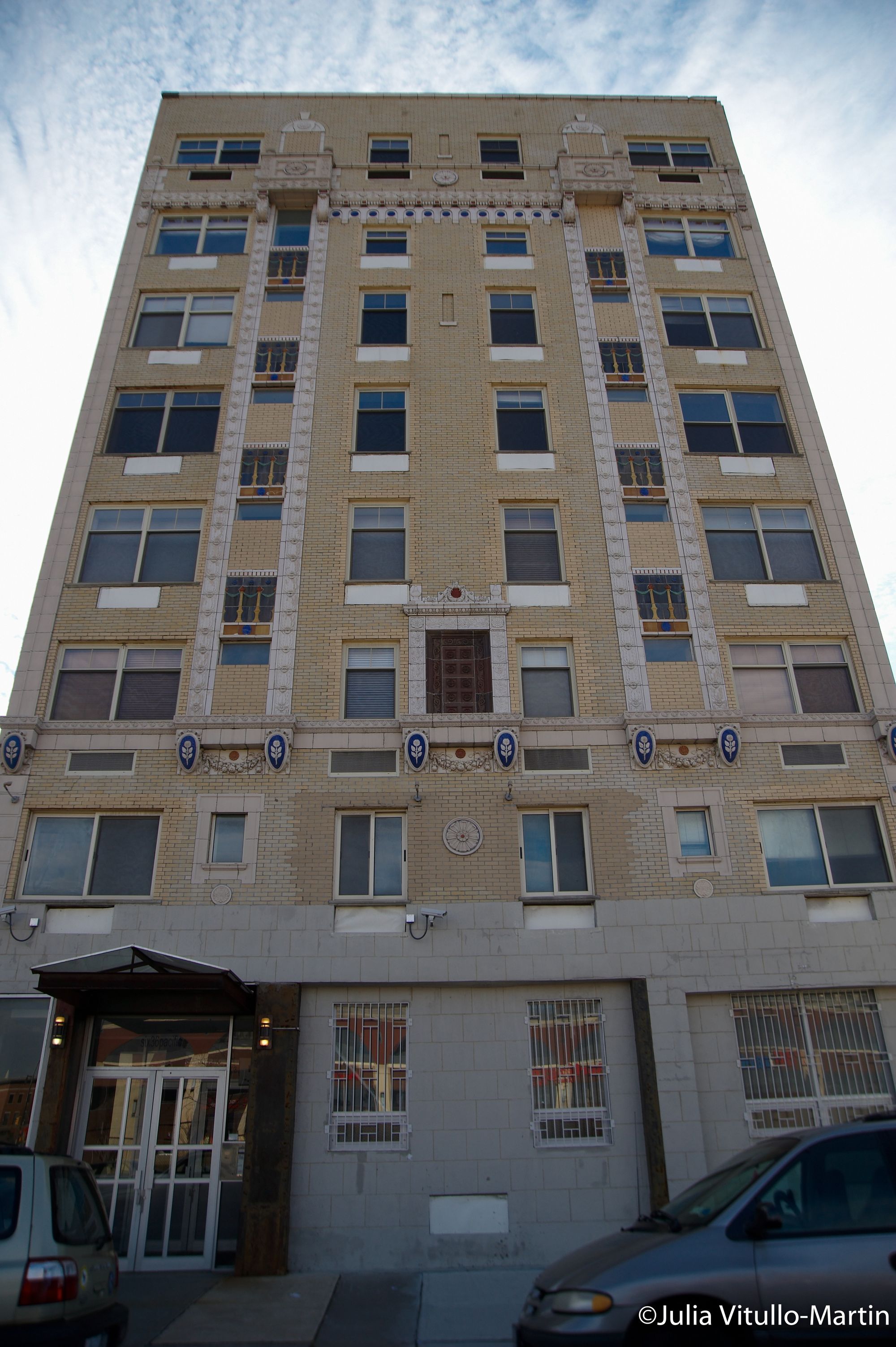
Art Deco 636 Pacific Street, center of Atlantic Yards resistance, now demolished.
Many of Ratner’s projects, Brooklyn’s MetroTech Center, for example, “were, quite frankly, unmemorable,” writes Doctoroff. His mall “was widely despised by architecture critics for being lightless and ugly with no common areas.” It’s far from easy to figure out quite why the administration settled on this particular developer to move forward with one of the most controversial developments in Brooklyn history. The normally staid New York Times actually called it a slugfest. Doctoroff brushes off the opposition, which nonetheless managed to garner to itself serious media attention, including regular coverage in the Times and Wall Street Journal, and inspired social media types to new levels of documentation and bad temper. One major blog that flourished during the fight has lasted until today, Atlantic Yards/Pacific Park Report.
The media regularly covered the full range of Atlantic Yard issues, most notably the use of the state’s power of eminent domain to take private property, which it handed over to the private developer, and the substantial government subsidies in the hundreds of millions of dollars. Both increased the combativeness as well as substantive strengths of opponents, who didn’t want their property taken and demolished (636 Pacific Street above) and objected to their tax dollars subsidizing a private venture.
Even for New York, the project was huge: some $5 billion to build 16 towers and the Barclays Center and its 18,000 arena seats on 22 acres. In 2014 the Chinese government’s Greenland Group bought 70% of 15 of the towers and renamed the development Pacific Park Brooklyn, while the ownership is now called Greenland Forest City Partners. Those love Barclays Center for the sports and entertainment argue it was all worth the price. Others disagree.
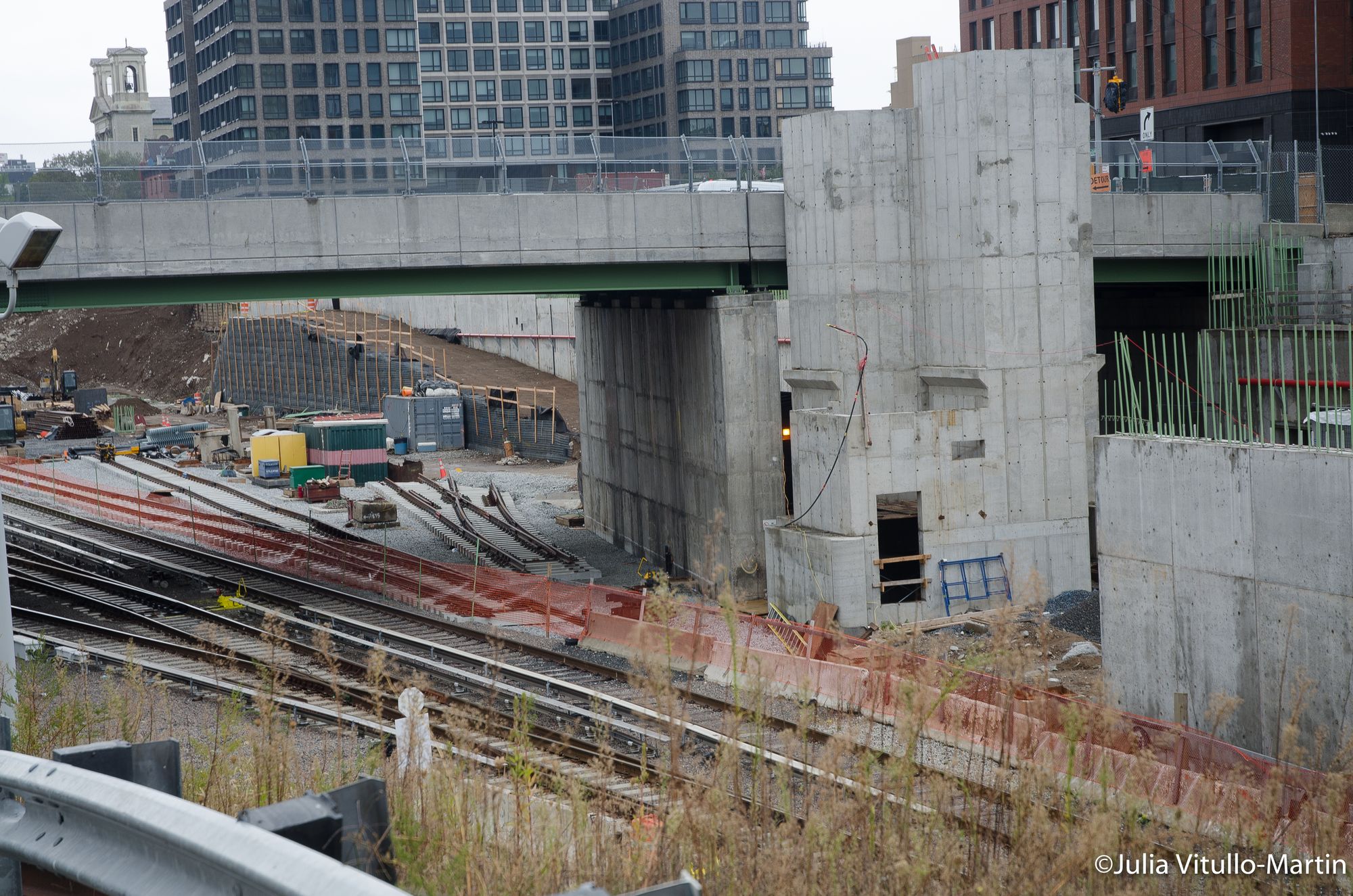 Atlantic Yards rail construction, 2017
Atlantic Yards rail construction, 2017
But Pacific Park Brooklyn (or Atlantic Yards, to old timers) is far from finished, as construction around what the Long Island Railroad called Vanderbilt Yard continues. Meanwhile, on the Brooklyn waterfront, development booms well into the De Blasio administration, which has proposed a streetcar, the Brooklyn Queens Connector, to unite the waterfront and move people along its route. Supported by Two Trees, the family-owned company that rejuvenated the Dumbo neighborhood of Brooklyn and behind the redevelopment of the Domino Sugar Factory site, the connector fills a void, albeit a controversial one, in a transit-starved section.
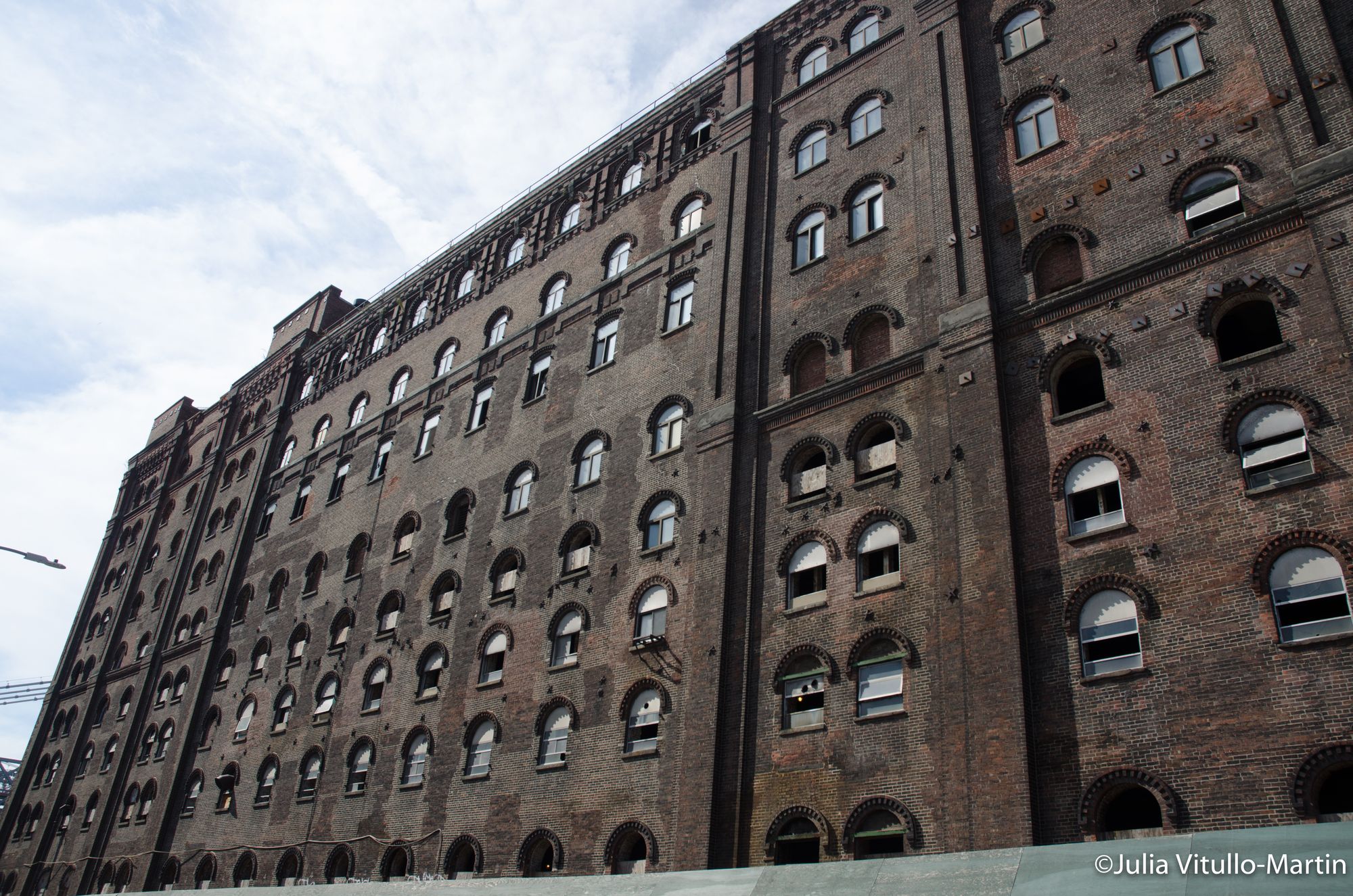 Domino Sugar Factory, Two Trees, Brooklyn waterfront
Domino Sugar Factory, Two Trees, Brooklyn waterfront
In the end, much of what you think of Doctoroff’s memoir-manifesto, Greater than Ever, New York’s Big Comeback, will be tied to what you think of the Bloomberg administration’s policies. New York faces serious ongoing problems of homelessness and poverty, which Bloomberg didn’t solve. But he did provide the underlying tax base that allows Mayor De Blasio the flexibility to pay for his progressive agenda.
Julia Vitullo-Martin is a Senior Fellow at the Regional Plan Association. Get in touch with her @JuliaManhattan.
Subscribe to our newsletter